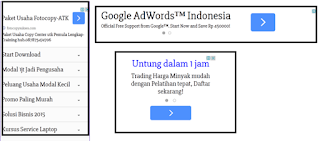Why Do You Need A Business Plan?
Planning is a process that never ends for all businesses. It is extremely important in the early stages of any venture when the entrepreneur will need to prepare a preliminary business plan.
There are different types of plans that may be part of any business operation. These include but not limited to Financial plans, Marketing plan, Human Resource plan, Production plans, Sales plans etc. Plans may be short term or long term or may be strategic or operational. Whatever the type of plan or the function, plans have one important purpose; to provide guidance and structure to management in a rapidly changing market environment.
A business plan on the other hand is a written document prepared by the entrepreneur that describes all the relevant external and internal elements involved in starting a new venture. It is often an integration of functional plans such as marketing, finance, manufacturing and human resources. It also addresses both short term and long term decision making for the first three years of operation. So, the business plan, or road map, answers the strategic questions of where am I now? Where am I going? And how will I get there? Potential investors, suppliers and even customers will request or require a business plan.
How I Prepared My Preliminary Project Proposal
In my case, I followed the following break downs keeping each section as brief as possible.
1. Background : In this section, I established the context of the project by giving an account of the problem it is trying to address.
2. State of the art: I gave an overview of existing and emerging technology in the field, including an account of rival technologies and a comparison of the advantages and disadvantages of the various options.
3. Proposal: I wrote an overview of the proposed project and the approach, ie the activities which I will be mandated to achieve the project objectives. Clearly establish the research element or novelty component in the proposal.
4. Consortium: an overview of the proposed manpower and establish the required ability to carry out the project successfully (eg skills, competencies, etc.)
5. Objectives and Deliverables: Identify (1) the objectives and (2) the deliverables of the proposed project.
6. Competitiveness: if applicable, establish the competitiveness or advantages of the proposed solution compared to other solutions, whether these already exist or are still being researched.
7. Cost: give an overview of the project cost (including start-up cost and working capital requirements).
8. Impact: this section should include:
i. Markets and Uses: identify possible uses and markets for the deliverables of the project.
ii. Benefits and Beneficiaries: identify the beneficies of the project's results (eg the project participants, the general public, third parties) and the manner in which they will benefit.
iii. Roadmap: give an indication regarding what further steps, effort, costs and timeframes are necessary before possible benefits can be realized from the deliverables or results of the project (unless these are realized within the lifetime of the project).
iv. Spillover Benefits: identify any secondary benefits of the project (eg facilitating participation in funding programs, improving Malta's ranking, strengthening Malta's reputation in a particular area, etc.)
Preparing a Detailed Business Plan
Stages of writing a business plan are: After deciding to go into business, before starting the business and when updating is required.
Business plans can be written for retail business, wholesale business, service business, manufacturing and any other type of business.
A business plan is written by doing the following:
Identifying all the questions that could have asked about the business.
Determining what additional information needs to be collected to answer all the questions.
Obtaining all the necessary information.
Comparison various alternatives
Making a decision on each question.
A business plan should:
Have a good appearance
Provide an index
Provide a summary
Number each copy
Be signed to show who is submitting it.
Depend on the nature of the business.
A business plan should be organized to carry a cover page, table of contents, executive summary, business description, marketing plan, organizational plan, operational plan, financial plan and appendices.
Outline of a typical business plan is as below;
1. Title: Feasibility study Report on______________________
Commissioned by_________________
2. Project consultants
3. Table of contents:
Executive Summary
The Report
Project Background
Objective of study
Project description and
Loan promotion
Promoter
Location
Market and marketing plan
Potential customers
Competition
Pricing
Sales Tactics
Advertising and Promotion
Distribution.
Technical Feasibility and management plan:
Factory
Machinery
Overhead charges
Packaging materials
Raw materials Manpower and Labor costs.
Financial Projection / Feasibility:
Overview on capital requirement
Financial plan
Projected cash flow
Projected profit and loss account
Expected balance sheet
Break-even analysis
Source and application of funds
Organization Plan:
Form of ownership
Identification of partners / Principal shareholders
Authority of Principals.
Management team background
Roles and responsibilities of members of organization
Assessment of Risk:
Evaluate weakness of business
New technologies
Contingency plans.
Schedules:
12 months projected sales
12 months proposed purchase
Fixed Assets and depreciation schedule
Profitability index.
Thanks for reading

